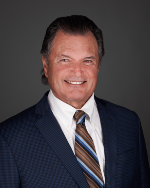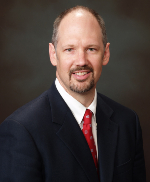Some of us swear by our liberal arts education and want to be sure that this kind of learning is preserved in our ever changing society. Our country has enabled us to partake in what is perhaps higher education’s greatest achievement: colleges and universities, here and abroad, that provide the opportunity to explore ideas both in the abstract and as they take shape in society, arts, sciences, humanities, professions, business and in our personal lives. We champion the values of the liberal arts experience. We cherish the times when we were students and continue as alumni to invest in the privilege that this education provides. And we recognize that what is included in a liberal arts curriculum will change with the times and believe that it may do so without compromising its core values.
Some, however, question the utility of a liberal arts education, arguing that the subject matter and the degree are irrelevant to everyday life, inappropriate for students lacking a first rate high school education and replaceable with less costly, specialized learning. Others question whether the liberal arts should include the pre-professional and professional, arguing that these subjects compromise the values and dilute the substance of a classical liberal arts education.
Both views are arrogant and short-sighted. The American liberal arts curriculum has usually been pragmatic, mixing theory and practice in both general education and the major. Even humanities majors, often considered the most rarified and abstract, include applications in speaking, writing, research, internships and career planning. A flexible approach to any course in a liberal arts college may include both critical thinking and real world application. Sometimes the mix requires a stretch of the imagination, to be sure, but there is no inherent and irreconcilable conflict. When the stretch is not made to mix theory with practice rigidity can set in. That deprives us of a humanistic perspective in business and professional programs or a practical perspective in the humanities, social or natural sciences.
A liberal arts degree includes the development of skills that free the mind to approach critically just about any idea or object—anytime and anywhere. These “liberating skills” subvert blind acceptance of ideas and experiences, inviting reasoned examination and thoughtful reflection. They enable the questioning of the status quo and encourage reframing of assumptions about what is thought about the world and what works in it. In this sense the liberal arts experience is revolutionary, providing the student ways to challenge the conventions of living, working and playing and the experience necessary to develop the self-esteem and reasoning skills essential to formulate news ideas and to develop new knowledge.
Given the range of topics and scope of thought applicable to a liberal arts degree, it is hardly surprising that the subject matter considered appropriate in a liberal arts college has been and remains controversial. Indeed, since the inception of the liberal arts in early medieval times, there have been constructive debates about content and delivery, resulting in a healthy evolution of the subject matter of a liberal arts degree. If the subject of the original liberal arts was grammar, rhetoric and logic, nowadays the curriculum has come to include pre-professional programs as well as applied programs in the arts, social and natural sciences, engineering, business and finance.
Perhaps more controversial is the way the range of subjects is taught: by mastery or by critical thinking. In actuality, most argue today that the best teaching involves a healthy mix of information and critical reflection. Likewise, it can be controversial whether instruction is better delivered in lecture or discussion format. Most argue that discussion rather than lecture stimulates critical thinking, although it must be said that some great lecturers can stimulate hypothetical or imagined dialogue between student and instructor.
A long look at the history of the liberal arts, from their inception through modern times, reveals adaptability in both subject and delivery styles. The constant is critical thinking itself, leading to the continuous reinvention of knowledge, the nurturing of the creative process and the widening of the audience of participants. Adaptation and accommodation have allowed new approaches to thinking and learning to affect content, approach and delivery.
Given the evolution of the liberal arts, it is possible to include both professional and pre-professional programs provided that they are approached with an open mind and expose students to controversies and challenges to their underlying assumptions. Critical is the alignment of mission and curriculum. In order to ensure that the mix of the traditional liberal arts, pre-professional and professional programs is consistent with the mission, attention needs to be given to the inclusiveness of the mission statement, the balance between specialized and critical learning in courses and majors, the practical and professional applications of traditional liberal arts majors and the critical implications of any pre-professional or professional study. Those attending to the development of a college or university curriculum must ensure that the courses and the majors approach the liberal arts inclusively so that professional study is “liberal” and “liberal” study is practical. The hubris of the humanities and the philistinism of the business world need to be tempered with moderation and an open mind.
Ellen Hurwitz, PhD
Senior Consultant, Stevens Strategy
President Emerita, American University of Central Asia


 John Stevens, Ed.D.
John Stevens, Ed.D. Brendan Leonard, M.B.A.
Brendan Leonard, M.B.A.
Leave a Reply